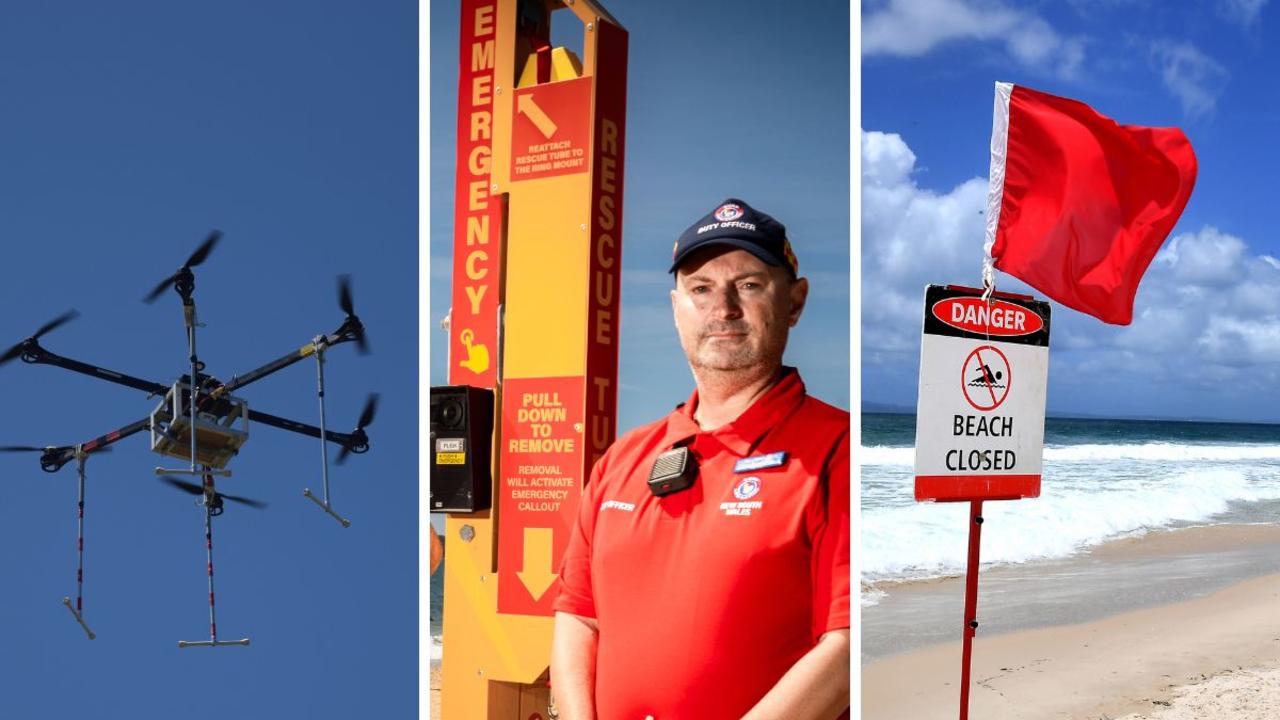Surf Life Saving Queensland looks to implement drones and beacons at more locations
Queensland surf lifesavers will look at ramping up the use of technology after a shocking rise in drownings on our beaches.

QLD News
Don't miss out on the headlines from QLD News. Followed categories will be added to My News.
Queensland surf lifesavers will look at ramping up the use of technology such as emergency beacons and drones in a bid to reduce drownings after the worst season for beach fatalities in three years.
The 2024-25 surf season ended last weekend with 12 drownings on the state’s beaches, up from eight in 2023-24 and the worst since 2022-23 when 11 people drowned.
Five of last season’s drownings were on the Gold Coast as more than two million people flocked to Glitter Strip beaches.
Surf Life Saving Queensland said all the 2024-25 drownings happened outside patrolled areas, either on non-patrolled beaches or away from the red and yellow flags.
SLSQ chief operating officer Greg Cahill said a full review of the drownings would be conducted at the end of the financial year but technology was already being looked at to try to reduce the tragic toll.
He said this could include expanding the use of emergency response beacons like one installed at Noosa, which allows passers-by to instantly alert lifesavers to critical incidents.
SLSQ is also increasing the use of drones after joining forces with hi-tech drone search and rescue company The Ripper Group late last year.
“We are disappointed that the number of drownings have increased,” Mr Cahill said.
“We had a decrease in the number of drownings outside of patrol hours during the 2023/24 patrol season, so to have the number increase to the highest we’ve seen since 2022-23 tells us that people aren’t heeding the warnings and continue to put themselves and others at risk by swimming in non-patrolled areas.”

Mr Cahill said many drownings were the result of people swimming outside patrol hours.
Another concern was that experienced swimmers were encouraging others to swim outside the flags.
“We understand the attraction of swimming outside the flags, but it’s high-risk,” he said.
“If more and more people choose not to swim between the red and yellow flags where they have the protection of trained professionals, our concern is that we’ll continue to have an increase in the drowning rate.”
Mr Cahill said the drowning toll in 2024-25 could have been higher were it not for the “heroic efforts” of lifesavers and lifeguards, who performed 1052 rescues and 109,760 “preventative actions” to avert trouble as more than 4.28 million people descended on the state’s beaches.
Heroic rescues during the season included one performed by Sunshine Beach nippers Liam Wright, Louie Hamersley, and Kai Akerman, who rescued a stricken swimmer during a surf carnival at Mooloolaba in February.
The three 13-year-olds, who train under top former iron series competitors Wes and Jade Berg, sprang into action to save the man after he became caught in a rip outside the red and yellow flags.
Mr Cahill said a number of lives were saved during Cyclone Alfred in March when treacherous seas pounded the coastline.
While southern and central Queensland lifesavers hung up their patrol caps until September, their northern counterparts have just unfurled the red and yellow flags as their annual patrol season begins.
Swimming at North Queensland beaches is discouraged during summer because of the threat of irukandji and box jellyfish.
Originally published as Surf Life Saving Queensland looks to implement drones and beacons at more locations




